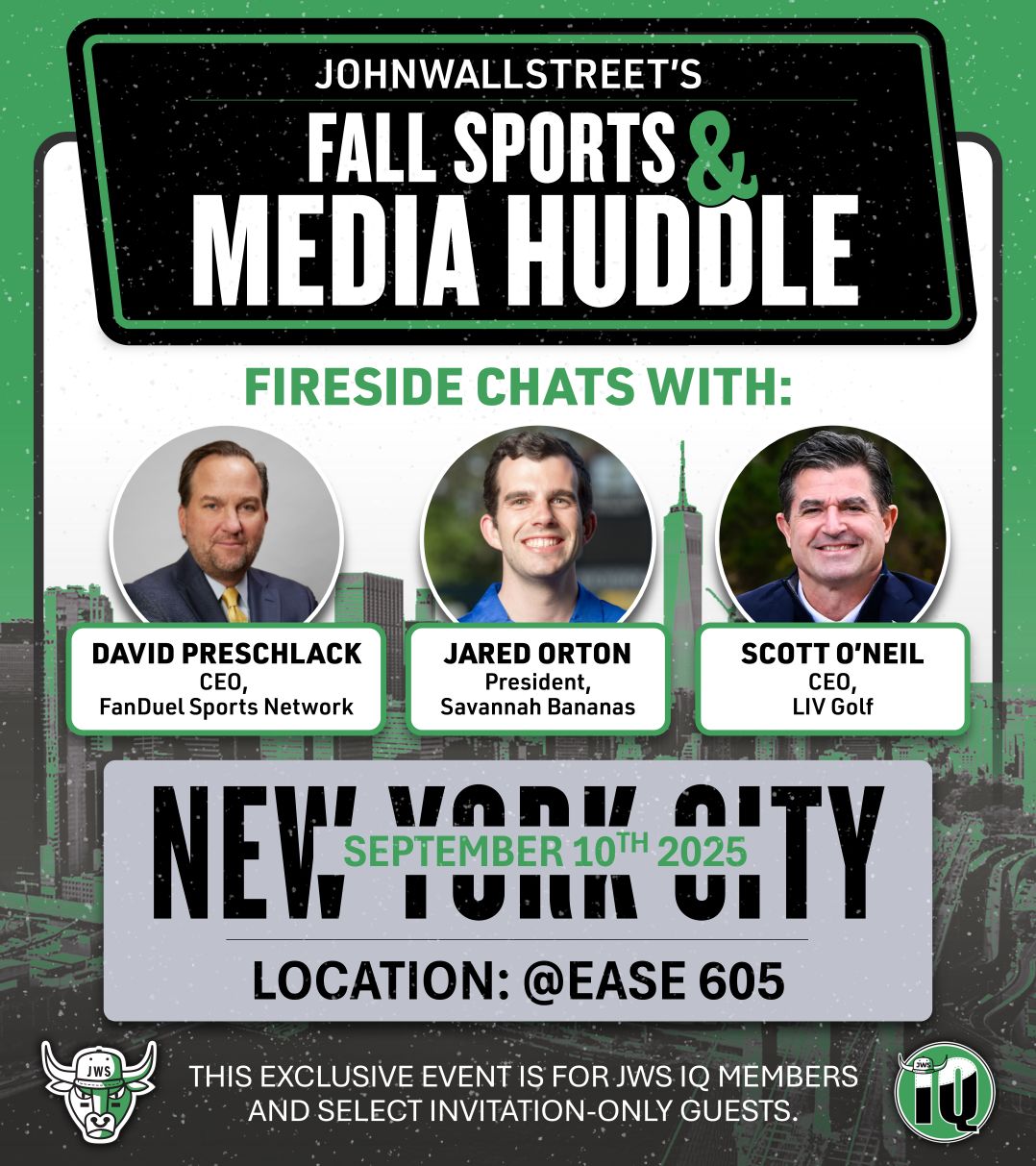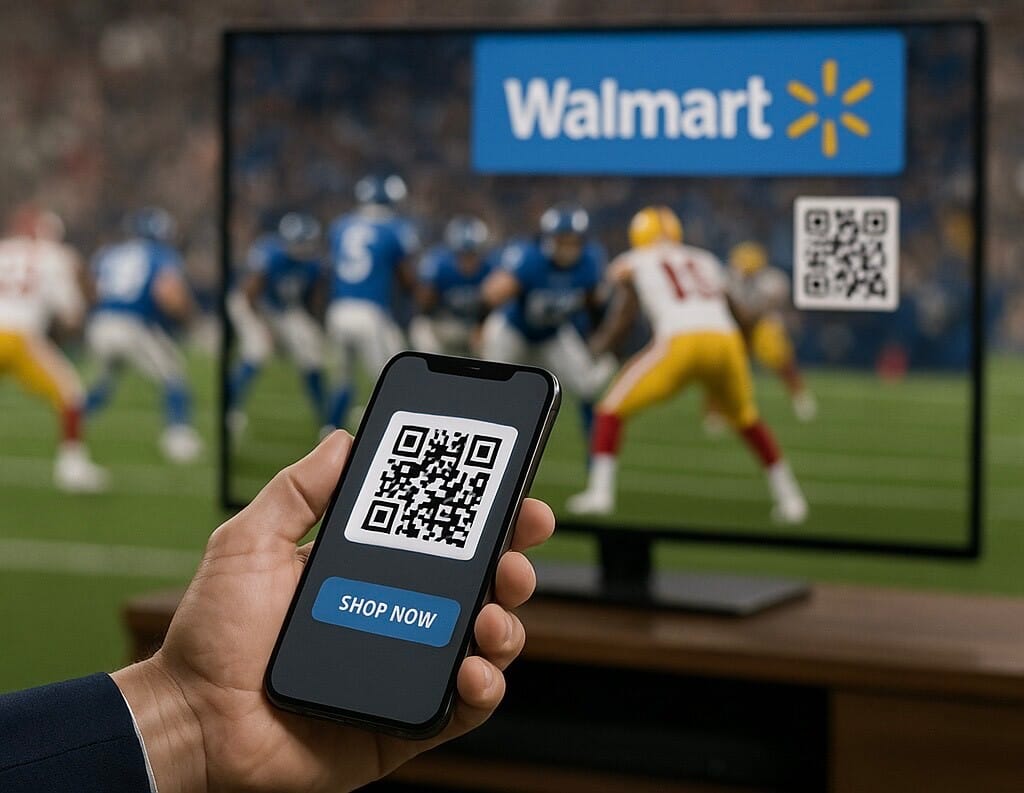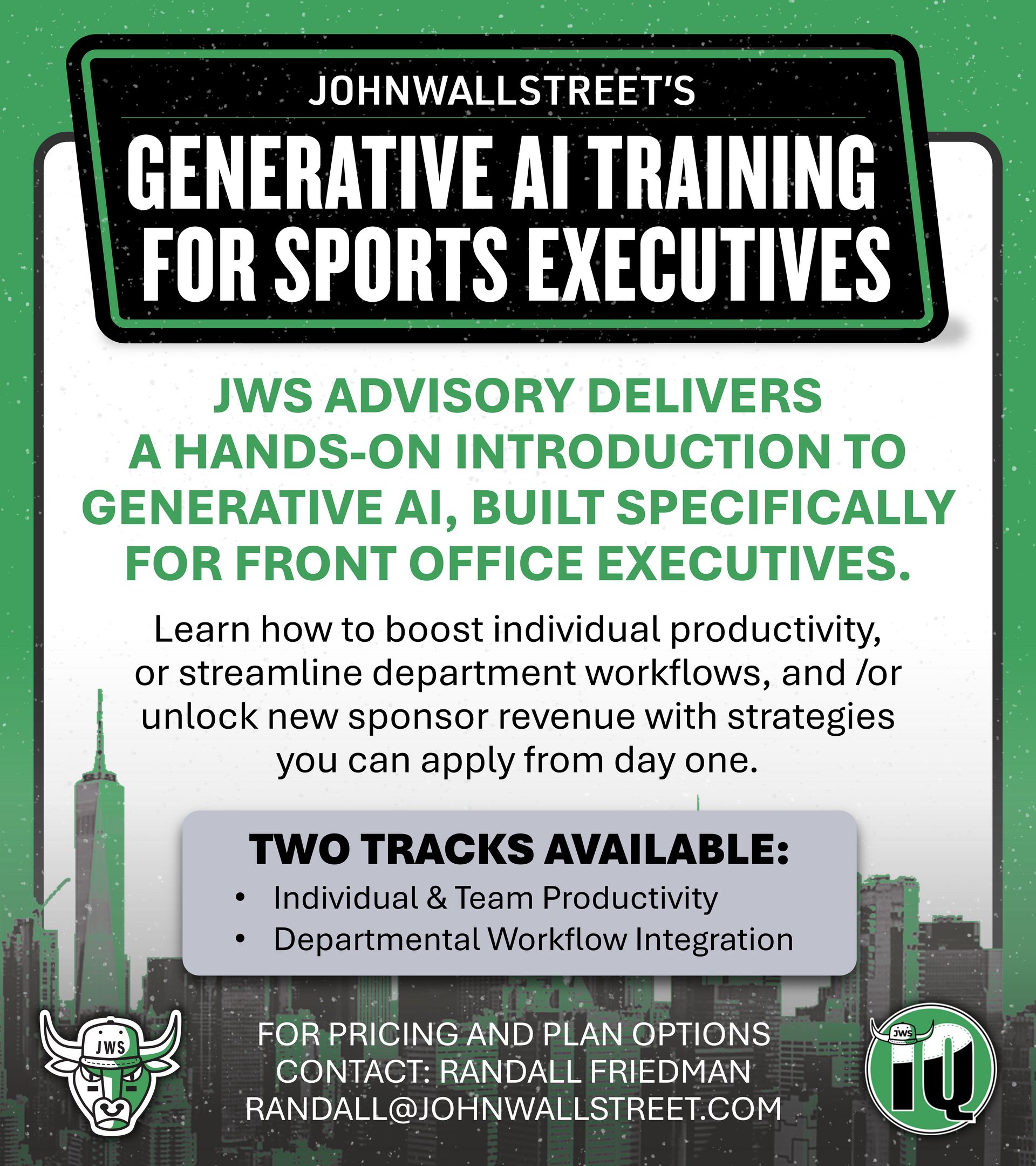- JohnWallStreet
- Posts
- A.I. is Turning Passive Sports Media Consumption into Active, Trackable Commerce
A.I. is Turning Passive Sports Media Consumption into Active, Trackable Commerce
sports. media. finance.


A.I. is Turning Passive Sports Media Consumption into Active, Trackable Commerce

Walmart Connect –the multinational discount hypermarket/grocer’s fast-growing retail media advertising division– teamed up with NBCUniversal to test AI-powered adverts during an NFL game broadcast last Thanksgiving.
The pilot, which used product search and social signals to help dynamically select and deliver the most relevant ad creative to viewers, produced a 4x return on ad spend (roughly four times higher than Walmart’s average for traditional TV spots) and a QR-code scan rate five times greater than its typical in-stream campaign benchmark. It also facilitated real-time purchase attribution typically unseen in sporting events.
In a separate athlete-led campaign run through the Walmart Connect platform, Walmart took advantage of natural language processing and computer vision to fine-tune creative and ad placement. That initiative had a 17% engagement rate, nearly 8x the platform average.
Of course, the value of retail media advertising in a live sports context extends beyond impressions, views, and engagement (i.e. surface-level metrics). It’s about understanding, anticipating, and converting fan behaviors instantly and at scale.
AI has turned sports programming into real-time training data that will drive the organization’s next transaction.
JOB OPPORTUNITY OF THE WEEK
Arizona Athletics is redefining the future of college sports—and we’re looking for a bold, brand-savvy communicator to help lead that charge. This is not a traditional university PR role. You’ll serve as a senior strategic advisor to the Athletic Director, influence high-level decisions, and craft stories that resonate nationally. This is a high-trust, high-impact role at the center of a $150M athletics enterprise with championship ambitions and a fast-evolving landscape.
As Director of PR & Communications, you will lead a cross-platform communications strategy that builds brand heat, galvanizes our fan base, and drives national relevance. You’ll shape the voice of a brand that spans 22 sports, millions of fans, a global alumni network, and one of the most passionate student communities in the country.
You’ll work closely with the AD, executive team, coaches, student-athletes, and creative teams to tell breakthrough stories, manage high-pressure moments, and build a brand that demands attention.
This role will directly support strategic priorities such as recruiting, donor engagement, and NIL positioning by shaping how the Arizona brand shows up—locally and nationally.


Retail media advertising (think: platforms that enable brands to serve targeted ads online or through media partners using the retailer’s own shopper and transaction data) has become a $53bn industry. It is projected to grow to $170bn by 2027.
The acceleration is being driven by AI adoption. These platforms are increasingly giving marketers the confidence needed to spend by introducing functionalities like real-time audience segmentation (think: targeting specific viewer cohorts), dynamic creative optimization (think: personalized ad formats on the fly), and closed-loop attribution (think: measurable ROI).
Cross-platform attribution that links ad exposure to transactions has long been a challenge for sports advertisers due to fragmented viewer data. But that is starting to change.
Major retailers and broadcasters, like Amazon, Walmart, and NBCUniversal, have developed their own AI-powered closed-loop systems, while B2B vendors, like Innovid, unify data streams across third-party media buys. Innovid’s system processes over a billion impressions per day and can map exposure to specific downstream actions (think: e-commerce purchases, app installs).
Tech infrastructure is advancing fast, too. Smart TVs from Samsung and LG now use computer vision to detect players, logos, and products on screen in real-time. The data is used to refine recognition accuracy, personalize future ad placements, and inform sponsorship strategies.
Even QR codes have gotten an upgrade. Their placement is now being optimized with camera sensors that capture the viewer’s attention and behaviors. Implementation helped to lift scan rates from 0.37% to 0.89% during live sporting events last year.
NBCU is among the established rights holders that have started to embrace the shift from passive viewership to active trackable commerce. Its shoppable experience –Must Shop TV– will identify and tag more than 500 items during select broadcasts (including some sporting events) and provide viewers with real-time click-to-cart functionality.
Some sports organizations have laid the groundwork to follow suit. While their stated focus to date has been on content distribution, rights owner O&O DTC streaming platforms are capturing valuable behavioral data—what their fans watch, when they engage, and how they navigate the broadcast/app.
The next step is clear: use AI to personalize fan merchandise recommendations, dynamically price tickets, and optimize sponsor creative based on these real-time behaviors. And ultimately, unlock incremental revenue per fan and increase franchise values.
But AI-native retailers and tech-driven platforms, like Amazon, are pulling ahead of traditional media companies and sports properties in the race to monetize fan attention on content with personalized commerce. The e-commerce giant processes over four billion data points daily. That gives it unmatched precision when targeting customers and providing attribution.
The personalized creative Amazon is able to deliver based on its purchase and viewing history resulted in 200% higher engagement than static ad formats during TNF games last season.
Walmart has taken a different, but equally data-rich, approach. Its Walmart Connect system combines in-store purchase intel from over 100 mm weekly shopping transactions with TV and streaming analytics (from its media partnerships, like with NBCU, its own digital properties, and third-party integrations) to predict which viewers are most likely to make a purchase while watching the game–then it serves them up targeted ads.
NBCUniversal and Walmart Connect reported that the contextual ad placements made during NBC’s 2024 Thanksgiving Day NFL game broadcast delivered up to 3x stronger sales attribution relative to traditional demographic targeting efforts.
A wave of new AI-powered applications is likely to push the boundaries of how broadcasters, retailers, teams and sponsors engage viewers in the years ahead and should keep the retail media advertising market growing. Expect personalization engines that manipulate broadcast content, commerce offerings in-game, the introduction of augmented reality overlays with embedded shopping moments, and the emergence of voice commerce (think: hands-free ordering).
The convergence of AI, sports media, and retail is a structural shift. Rights owners should be actively preparing to take advantage of it, either by building their own infrastructure or partnering with those who do, to capture new revenue opportunities, reimagine sponsorship values, and future-proof their monetization models.
Those who don’t will fall behind.
About The Author: Former Washington Commanders chief strategy officer Shripal Shah has spent much of the last decade helping media companies, big box retailers, and innovative startups enhance their businesses using AI. He’s now transforming sports businesses using much of the same playbook.
Shah is also a professor in Georgetown University's Sports Industry Management Program and the author of “Leveling Up With AI: A Strategic Guide to AI in Sports Marketing” and “The Art of Victory: Generative AI and the New Frontier of Global Sports.” You can reach him direct at [email protected].

Top 5 Sports Business Headlines
Click here to subscribe to Sport & Story Daily and never miss a story.
Everyone Wants to Own a Soccer Club—But Not Everyone Should
Fitch Reveals, Gives ‘A’ Rating to $1B in New NFL Debt
Puma Shares Fall Amid Concerns of Full-Year Loss
ESPN Plans to Spend Billions for a Cable Network? In This Economy?
Apple, F1 Streaming Reports Leave Future of ‘F1 TV’ Unclear



